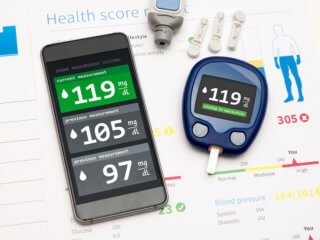Researchers develop a mobile-based tool to detect HIV
A team of researchers from Brigham and Women’s Hospital has developed a rapid and low-cost platform for detecting, monitoring, and managing HIV virus using the cellphone and nanotechnology.
Based on a paper published in the journal Nature Communications, recently a team of highly qualified researchers from Brigham and Women’s Hospital has come up with a portable and low-cost mobile-based diagnostic tool. It uses a cell phone and nanotechnology that can help the users and professionals in spotting HIV viruses and monitor their management in the areas where the resources are limited. Since the conventional HIV virus monitoring methods are costly, this cell phone system can truly be a gift for those looking for ways to bring down the cost of HIV diagnosis and treatment.
For the last many years, management of HIV has been one of the major global challenges, especially for the developing countries. HIV is a virus that attacks the healthy cells in the human body and cripples the immune system.
Lack of proper infrastructure and competent medical experts is actually making it very difficult for various developing nations to take proper steps and make avail the HIV treatment and spread awareness amongst the people.
The disease is having a big effect on the social and economic development of a large part of the population all over the world. Lack of resources has increased in many countries as many homes have lost one or more breadwinners due to AIDS. Having this HIV detection device will certainly help in reducing the number of deaths occurring due to lack of proper diagnostic tools and easy affordability in various areas.
According to Hadi Shafiee, who is a PhD senior author and the Principal Investigator in the Division of Engineering in Medicine and Renal Division of Medicine at the Brigham, the cellphone system detecting HIV virus is fast and low-cost and it signifies a new technique for identifying the serious infection, which would ultimately help in reducing the risk of transmitting the virus and could also be very beneficial in detecting early treatment failure.
Hadi Shafiee and his team of researchers created this technology to detect HIV virus’s amplified RNA nucleic acids from just one drop of blood.
They did it with the help of nanotechnology, a cell phone, a microchip, and a 3D-printed phone attachment. The most remarkable part was that the overall cost of the material including microchip, phone attachment and reagents was under $5 per test.
While developing this cellphone-based technology for HIV virus detection, researchers found that this platform detected the HIV within one hour with the specificity and sensitivity of 99.1 percent and 94.6 percent respectively at a clinically applicable threshold value of 1,000 virus particles/ml.
Mr. Shafee further shared his views that the health personnel in developing countries will have no difficulty using these devices when they would travel to different regions to conduct HIV testing and monitoring. Since the whole testing procedure is so fast and they will be able to make the decisions regarding the next medical step right there within the minutes of getting results.
In addition, according to the lead author Mohamed Shehata Draz, this technology can also be used as a rapid and low-cost diagnostic tool for detecting other diseases.
Image credit: www.ndtv.com
















